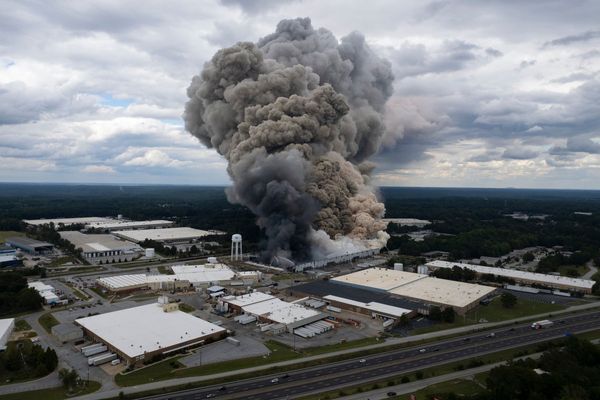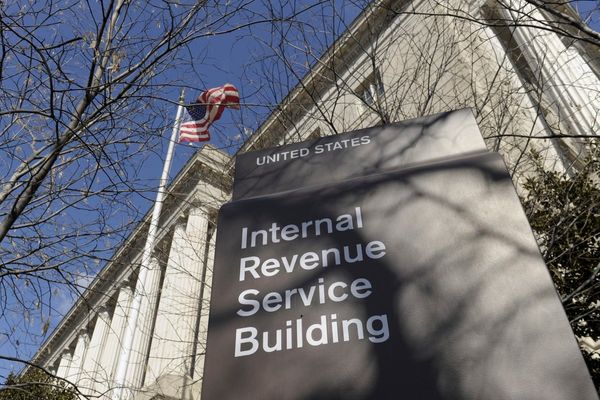The Chinese military unveiled a poster titled “paralysing strikes” as it carried out live-fire drills around Taiwan in the latest show of force amid rising tensions in the region.
The Eastern Theatre Command of the People’s Liberation Army said on Wednesday that the latest wargames were part of its “Strait Thunder 2025A” drills, suggesting that they could be followed by group B exercises in the near future.
The drills on Wednesday employed the Shandong aircraft carrier task group to simulate strikes on ground and maritime targets east of Taiwan. The exercises included vessel-aircraft coordination, seizure of area air superiority, and strikes on ground and maritime targets, the military said in a statement.
The new poster, state media outlet Global Times reported, was captioned, “Against the tide of history. Heading for a dead end”.
The message, seen as a thinly veiled threat to Taiwan and its Western allies, came a day after a video announcing the drills called Taiwanese president Lai Ching Te a “parasite”, depicting him as a cartoon bug held up by a pair of chopsticks above a burning Taiwan.
The #PLA Eastern Theater Command on Wednesday released a new theme poster titled "Paralyzing Strikes." The caption read, "Against tide of history; Heading for dead end." The ground force of the theater command conducted long-range live-fire drills in waters of the East China Sea… pic.twitter.com/Cxr7vQS9n4
— Global Times (@globaltimesnews) April 2, 2025
Senior colonel Shi Yi, spokesperson for the Eastern Theatre Command, said the “Strait Thunder 2025A” exercises were conducted in the central and southern parts of the Taiwan Strait and focussed on “the implementation of inspection and identification, warning and expelling, interception and seizure and other subjects”.
The military said the drills were meant to practice precision strikes on port and energy facilities but did not offer details on the exact location.
The exercises came on the heels of US defence secretary Pete Hegseth's ongoing tour of Asia during which he visited many countries and criticised China, emphasising that countering its threat to Taiwan was a key priority for Washington.
China, which considers Taiwan as its territory, has carried out numerous drills around the island in recent years. Beijing has escalated its rhetoric against Mr Lai, who was elected last year, denouncing him as “separatist” for pushing for sovereignty.
【海警艦艇編隊按一個中國原則環台島執法管控】中國海警局東海分局新聞發言人朱安慶表示,4月1日,多支海警艦艇編隊位台島周邊海域組織執法巡查,開展臨檢拿捕、攔截扣押等科目演練。台灣是中國的一個省,這是按一個中國原則依法管控台島的實際行動。 pic.twitter.com/BLri5cZgxQ
— 人民日報 People's Daily (@PDChinese) April 1, 2025
In view of the surprise military drills, China's Maritime Safety Administration announced closure until Thursday night of the shipping zone in the northern part of the eastern province of Zhejiang, more than 500km from Taiwan.
Taiwan's defence ministry, in its latest update on Wednesday, said 76 Chinese aircraft and 15 warships had operated around Taiwan in the past 24 hours.
76 PLA aircraft, 15 PLAN vessels and 4 official ships operating around Taiwan were detected up until 6 a.m. (UTC+8) today. 37 sorties crossed the median line and entered Taiwan’s northern, central, southwestern, and eastern ADIZ. We have monitored the situation and responded. pic.twitter.com/SVKDXferVr
— 國防部 Ministry of National Defense, ROC(Taiwan) 🇹🇼 (@MoNDefense) April 2, 2025
An unnamed Taiwanese security official told Reuters that more than 10 Chinese warships operated in the island’s "response zone" on Wednesday morning and that China's coast guard was participating with "harassment" drills.
It’s likely that China will conduct a second round of the exercises, following the precedent set by last year’s major war games Joint Sword 2024A and Joint Sword 2024B.
Taiwan's security officials said Beijing was attempting to normalise drills near Taiwan as it had been carrying out such patrols near the island every 7-10 days on average.
Taiwan has faced the threat of a Chinese invasion since 1949 when the Republic of China government retreated to the island after losing the civil war to Mao Zedong’s communists. In spite of ongoing tensions, however, the two sides have not engaged in direct military conflict.







